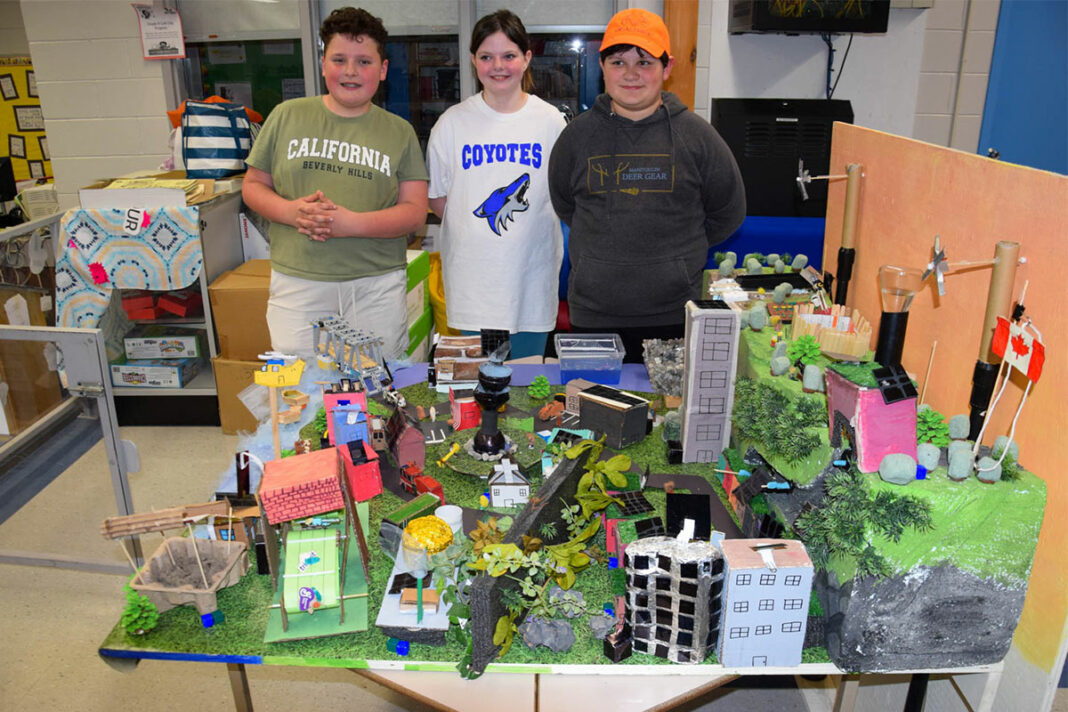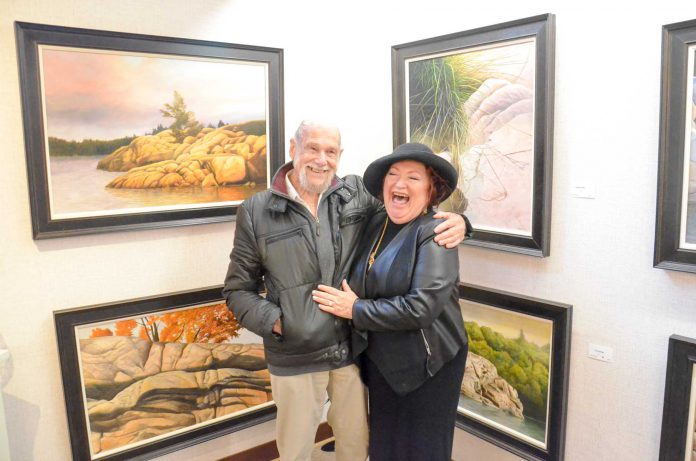LITTLE CURRENT—The future looks to be in good hands after touring results of Ms. McGraw’s Little Current Public School students’ Conscientious Coyotes efforts as part of ‘The Future City Experience’ engineering challenge.
“The Future City Experience is a design challenge that uses the engineering design process to have students research, design and build a model of a city 100 years into the future,” explained Ms. McGraw. She noted that in the spring of 2023 she had signed up for a program called ‘Engineering in the classroom.’ “Unfortunately, there were no engineers in our local area that were part of the program.”
Undaunted, Ms. McGraw took advantage of an alternate opportunity that “would connect us with engineers through social media.” That program was Future Cities.
This year’s focus of the challenge was to design a city in response to the climate crisis. “The class decided to focus on a few local issues that were of concern to them,” said Ms. McGraw. “The first was garbage and the projected life of the NEMI landfill, the second was recycling or the lack of recycling, and the local sewage lagoon and the overflows that have occurred in previous years.”
The months-long project saw the students combing through the Northeastern Manitoulin and the Islands website where they gained a lot of insight into the challenges facing their community. “They explored similar problems worldwide and how they were being addressed in other parts of the world,” said Ms. McGraw.
The students were assisted in their efforts by engineers Maria Zenina, a technical manager at the TIS Enterprise Business Architect at Enbridge and Meara Macdonell, a fourth-year engineering student from Queen’s University.
“Our teacher, Ms. McGraw, thought this would be a good learning experience for our class,” said Ada Nichols. “Special thanks also go to Ms. Pam (Rohn), Mr. Walsh and our families for providing us with some of the materials.”
Student Shane Cranston noted that nearly all of the materials in the complex model the students constructed were recycled.
“We had a few challenges,” admitted student Owen Ferguson. “For one, we had the ratios and made sure everything was the correct ratio. We completed our build three times, but always wanted to push for more.”
“When we started, I thought it would be small,” shared Hazel. “I didn’t realize that it would get so big and positively influence our class.”
“This is something that I would never have done before,” said Brandon. “It was fun, I worked with new people and enjoyed making new friends.”
“I am glad we did it,” said Jessie. “I was pushed out of my comfort zone.”
“I like that this year we did it, it was an amazing experience,” said Ada. “At first, I didn’t think we would do much at the end. I was really nervous representing our class.”
“I like that this year we got to do the Ontario Skills Competition and this project,” said Owen. “I was able to learn, reflect and improve. I love building things.”
“When we first started, I felt like I would fail or mess up,” said Rayden. “I learned that I could do things like this and that I should push myself more.”
“It was a really good experience,” said Shane. “A lot of friendships were built and a lot of hands-on learning.”
“While creating our residential buildings, we made sure to incorporate housing options for people who cannot afford their own home,” noted class spokesperson Ada. “These options include row housing, apartments and a multi-purpose S building.” That community hub building, based on a Chinese complex, “provides diverse needs for the elderly, physically challenged and vulnerable.”
Shane took The Expositor on a tour of the model city, which includes recycling manufacturing facilities, an innovative cover for the lagoon system to prevent rain from overfilling the site, garbage-fueled power generation and a host of 21st Century options for meeting urban challenges.
Vehicle-free hiking areas, plenty of green space (which doubles as a carbon sink) and a commercial area that focussed on a need versus want approach. “We wanted our community to have access to the amenities required, but didn’t want to add any unnecessary infrastructure,” said Ada, who pointed to the three major infrastructures included in the build. “The first is a factory that turns human waste, farm waste and food waste into a reusable fuel source; the second takes recyclables and turns them into building materials and thirdly, we have created a sewage lagoon that will process human waste prior to it being turned into fuel.”
Water wheels, wind, solar and other alternative energy sources were all integrated into the model. The city is also designed to encourage walking rather than driving, a clear change from most current urban models.
As part of the project the students presented their work to a panel of engineers for assessment.
“The engineers were all very impressed with the amount of research and work the students put into their project,” said Ms. McGraw.





